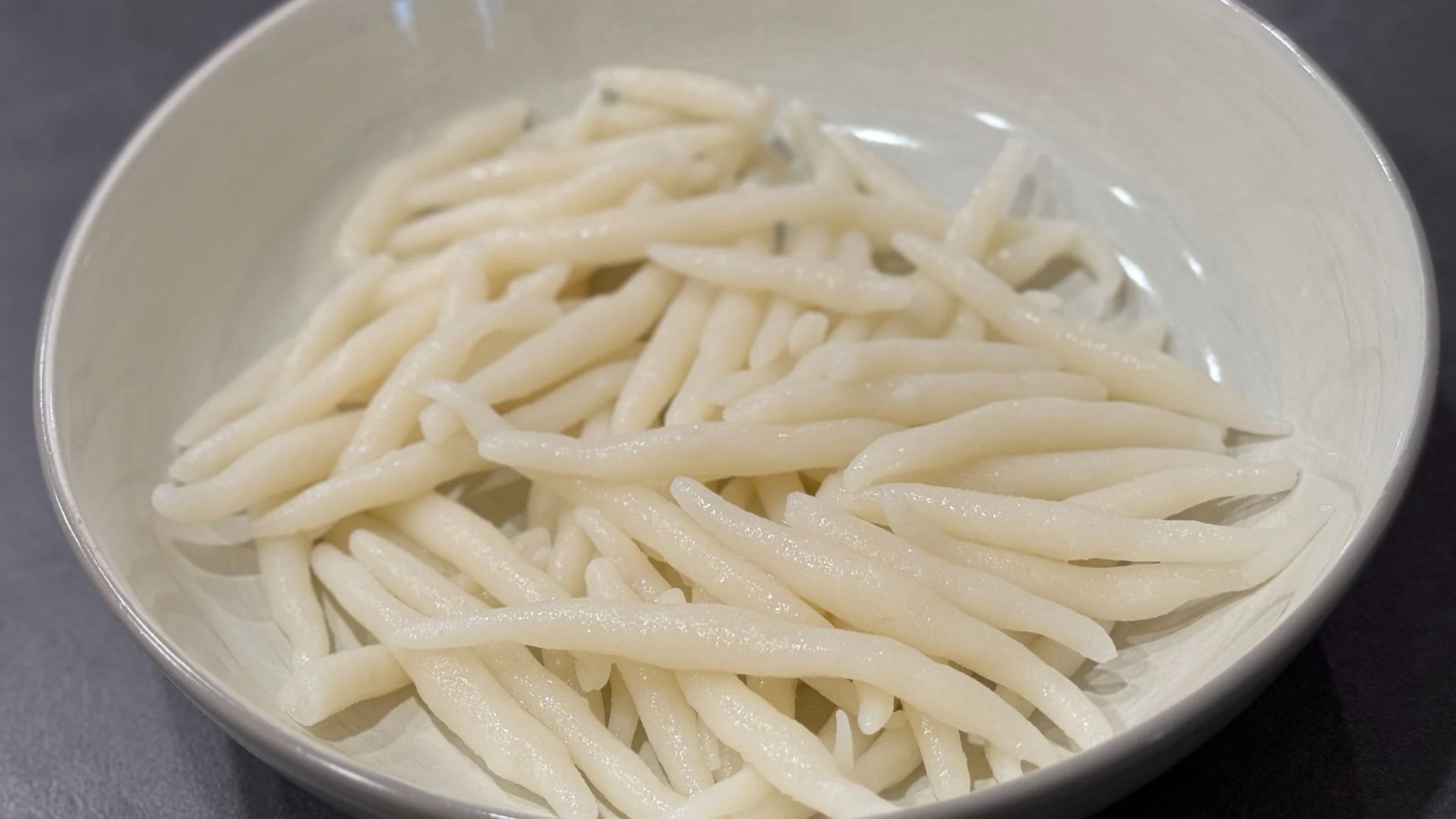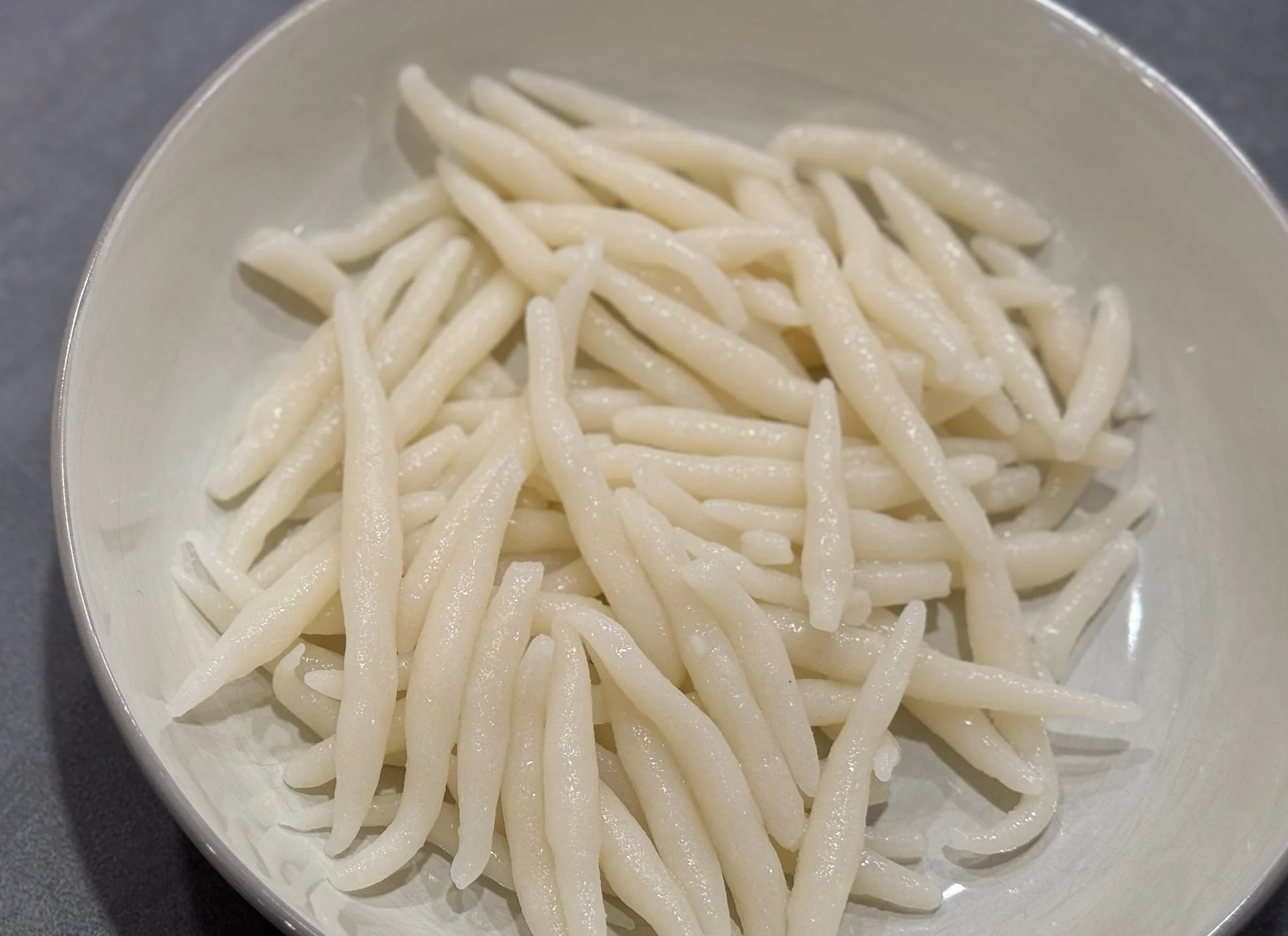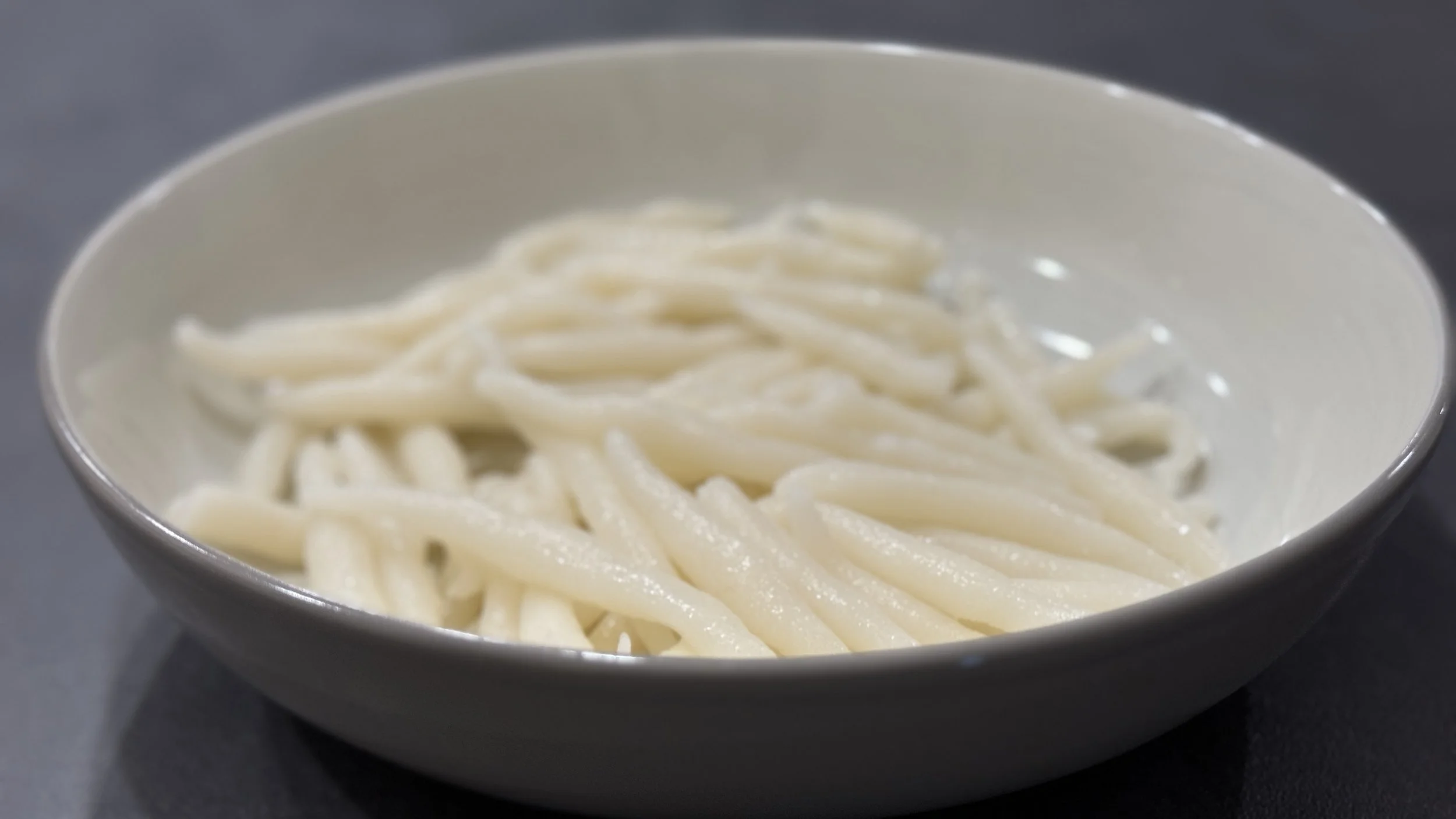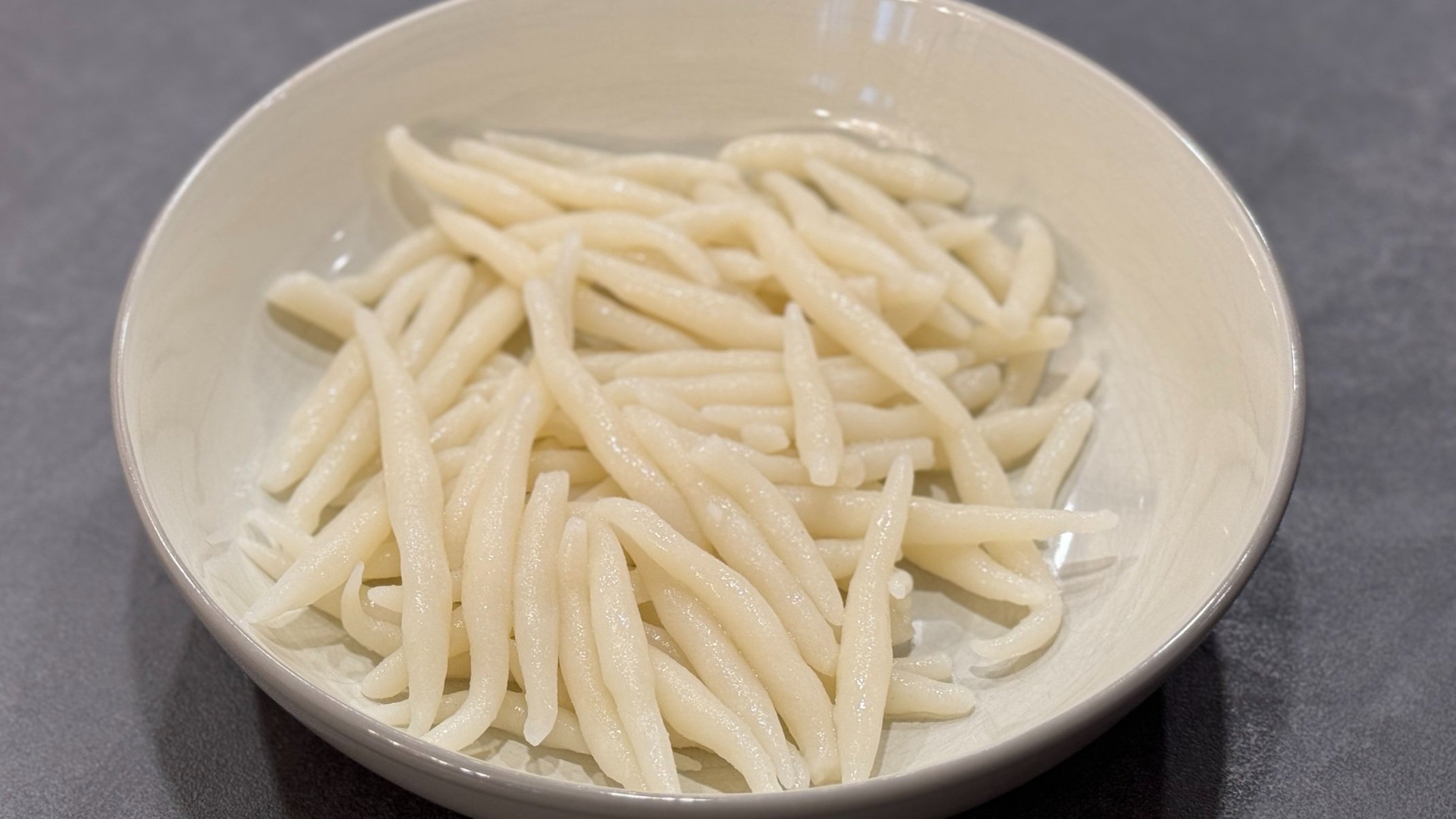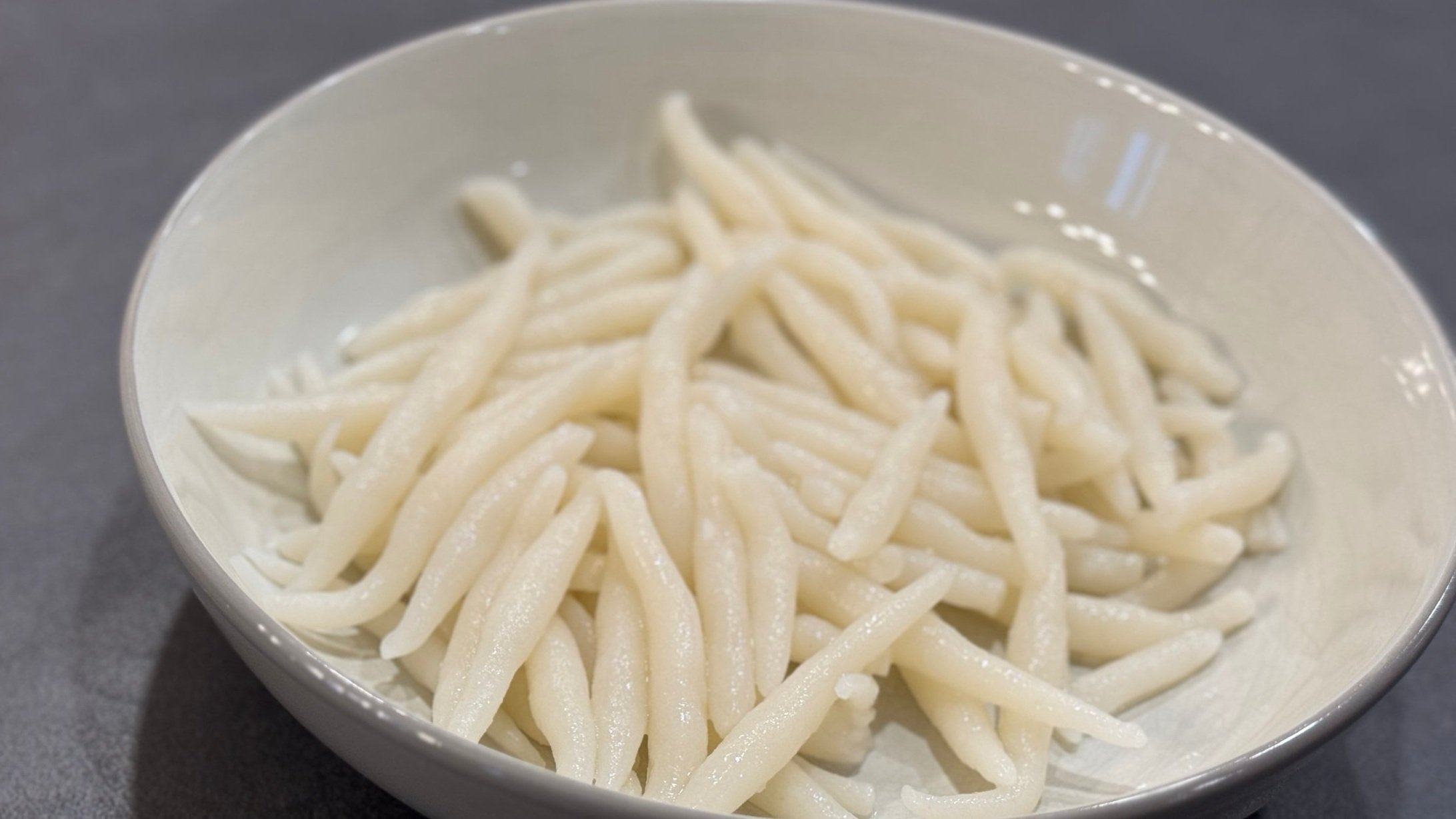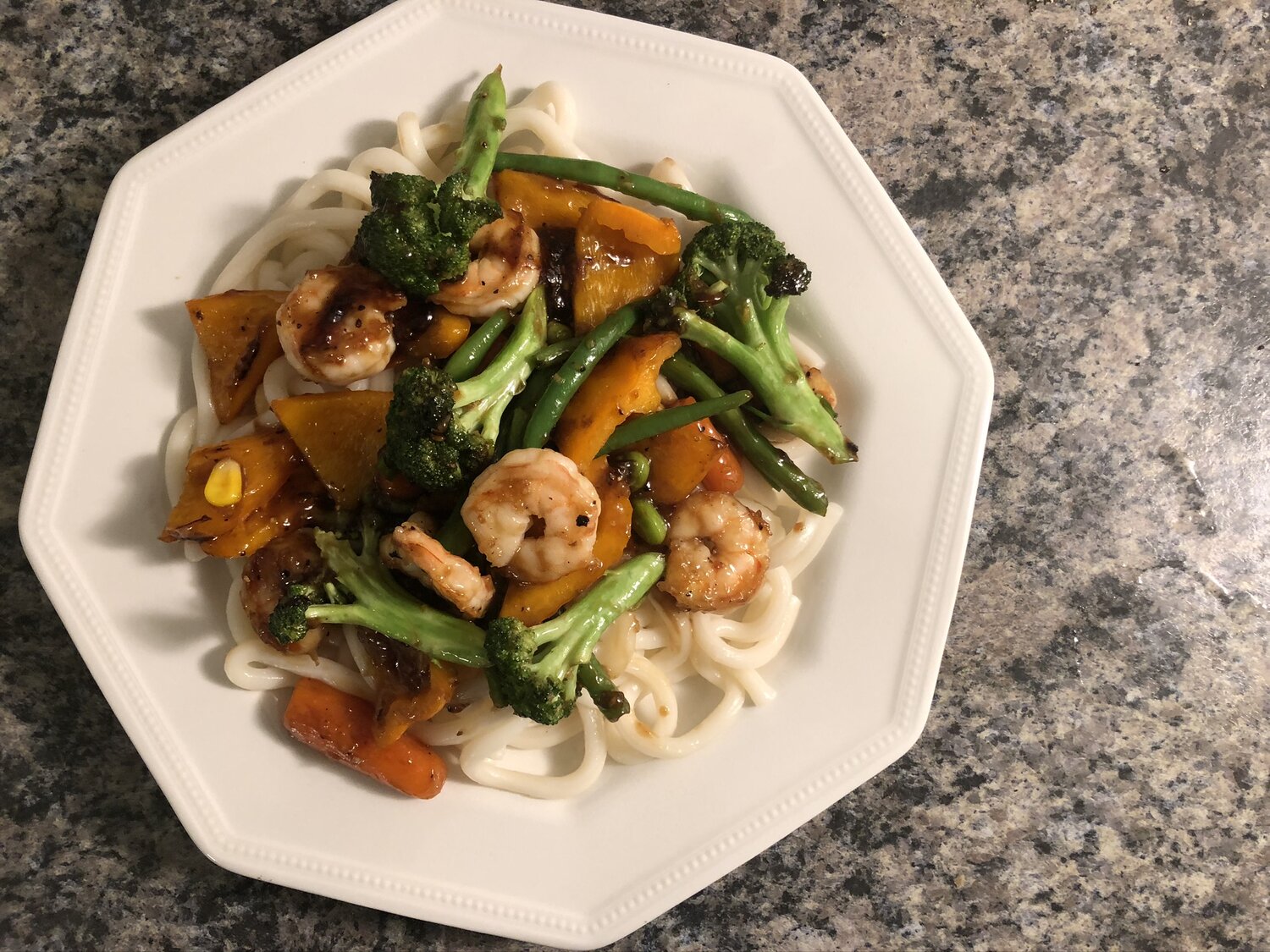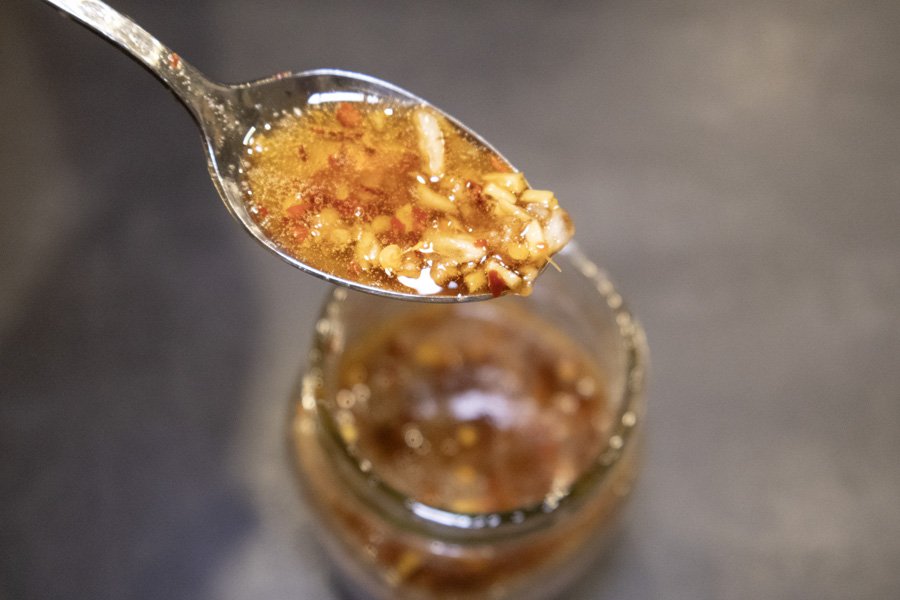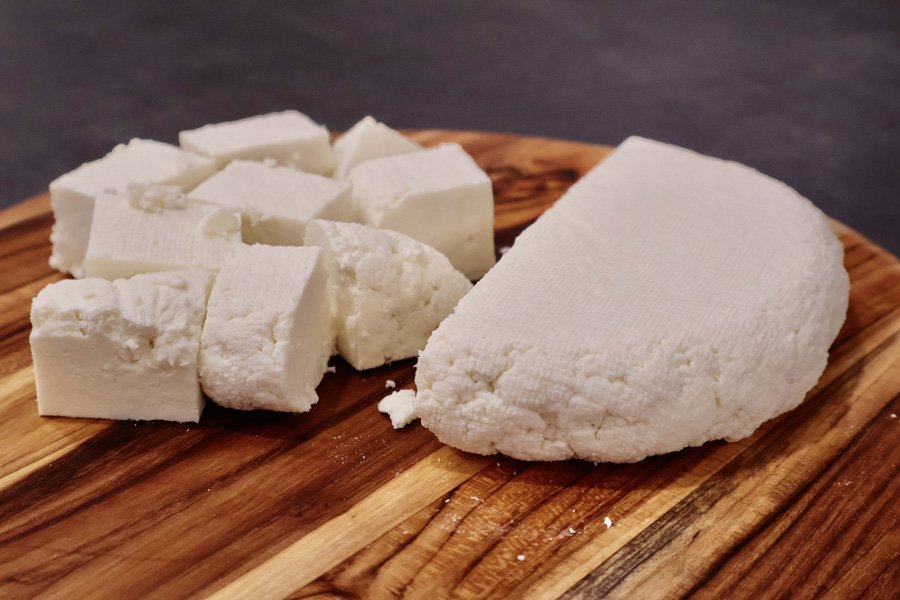How to Make Silver Needle Noodles (Loh Shi Fun)
This post may contain affiliate links. Read our disclosure policy
Looking to enjoy a satisfying Asian noodle dish? Silver Needle Noodles (Loh Shi Fun) are an excellent choice for a wholesome meal, but they are hard to find at the grocery store! It’s unbelievably easy to make your own rice pin noodles from scratch with only 5 ingredients!
Would you believe I’ve never made my own noodles before? Yup, never!
I’ve made bread now for several years and I do it quite often. You must have seen plenty of my Indian bread recipes in particular, from Broccoli Parathas to Aloo Parathas and Cast Iron Naan Bread. Of course, I also make my own pizza doughs and dinner rolls! I’ve tried my hand at gnocchi once a long time ago, but noodles? Nope, never!
Well, if you know me, then my philosophy is that if you need to get your creativity going in the kitchen, then set aside some time to think of some realistic goals. For more details on goal setting and other ways to inspire you to get started on your cooking journey today, be sure to check out my free motivational guide to explore your potential in the kitchen, Make Cooking Fun!
In my specific case, I wanted to prepare Cambodian Lort Cha noodles to explore Cambodian cooking for the first time. However, one of the main ingredients of this, rice pin noodles, just weren’t available in any regular grocery store or even the Asian grocery stores! I saw that you could easily make these noodles at home, so why not! Now, here we are!
If you’ve never made noodles before and want to check it off your bucket list, then prepare this Silver Needle Noodles recipe as part of your Live to Cook one-month challenge! You can get these free resources by signing up to my email newsletter, plus all of my latest recipes will be sent directly to your inbox!
To follow along with the process of making some delicious Loh Shi Fun noodles, then be sure to watch the video at the bottom of this post! Don’t forget to subscribe to my YouTube channel if you’re not already, and be sure to press the bell button so you’re notified whenever a new video recipe goes live! Let’s get cooking!
What Are Silver Needle Noodles?
Silver Needle Noodles, also known as Silver Pin Noodles, Rice Pin Noodles or Rat Tail Noodles, are thin and translucent short noodles that are made from rice flour. These noodles are commonly used in Asian recipes, such as Chinese, Malaysian, Cambodian, and Vietnamese. They are similar to vermicelli noodles in the sense that they are translucent, but they are dense like Udon noodles. Unlike either of these noodles, they are short and have pointy tips, which is why they are called pin or needle noodles, or even rat tail noodles, because their ends look like those of a rats’ tail!
Dietary Information for Silver Pin Noodles
These Silver Pin Noodles are…
Vegetarian
Vegan
Gluten free
Low fat
Dairy free
What does Loh Shi Fun Taste Like?
Honestly they’re very unique but they are very delicious! They are dense noodles, but overall they are soft with a slight chew that bounces back. I snacked on a few plain ones, actually, so they are indeed tasty! However, they are neutral enough to really soak up whatever sauce you’ll coat them with!
Equipment to Make Silver Pin Noodles
Ingredients For Rice Pin Noodles
You only need 5 simple ingredients to prepare your Rice Pin Noodle From Scratch! For all ingredients and their quantities and to save the recipe for later, scroll to the bottom of this post for the FULL PRINTABLE RECIPE CARD, or press the “Jump to Recipe” button. You can also scale the recipe based on how many portions of noodles you want to make.
Rice flour: I love to use rice flour when I need to add thickness and density to what I’m cooking. Some recipes substitute this with wheat flour, but this could affect the appearance, texture and taste. Furthermore, using wheat flour will no longer make these noodles gluten-free. You’ll need rice flour for the noodles themselves and the dusting.
Tapioca starch: You could also use potato starch. This adds the chewiness to the noodles.
Corn starch: Gives the noodles that white colour and binds everything together.
Water: For cooking your noodles.
Salt: You can’t make anything without salt! This will add some flavour to our rice pin noodles, similar to how you would season pasta noodles.
How to Make Loh Shi Fun
Kneading the dough
Put all the dried ingredients in a large bowl and mix well. Boil the water and then carefully pour all of it in the bowl.
Start mixing with a spatula until all the ingredients come together.
Then, start sprinkling rice flour 1 Tbsp at a time and start kneading until the dough is no longer sticky. Once the dough is no longer sticky, you can switch to kneading with your hands.
Once the dough has been kneaded to a soft, smooth and stretchy dough, set it aside and sprinkle some rice flavour over a 1/4 baking sheet or a plate.
Shaping the noodles
Take a small dime size ball from the dough, place between the palms of your hands and roll into a long rod with pointy edges, essentially a pin and place on the prepared baking sheet or plate from earlier.
Repeat the same with the remaining dough and every so often lightly dust each layer of rice pin noodles with rice flour to prevent sticking.
Cooking the noodles
Once the noodles have been shaped, bring a pot of water to a boil and add a generous portion of the noodles in the water. Try not to overcrowd the pot.
Once the noodles start floating, drain or strain and then place in a bowl full of cold water.
Once you have cooked all the noodles and placed them in the bowl of cold water, drain this water, and transfer the noodles to a container or a bowl.
Store at room temperature for 1-2 days.
Tips FOr Delicious Silver Needle Noodles from Scratch
The water needs to be at a boil before you add it to the dry ingredients to allow the flour to cook slightly before making the dough.
You may need to add extra rice flour once you start kneading the dough to make it soft, stretchy and not sticky. Add about 1 Tbsp at a time to adjust the consistency.
These noodles will not hold well in the fridge and may dry out if stored uncooked. If you have to store it for later, cook them first and then store in the refrigerator or at room temperature for 1-2 days.
Removing any accessories or from your hands or fingers will help in rolling out the pin noodles consistently.
How to Store Silver Needle Noodles Here
As a common theme on the blog, it is recommended that you enjoy your Silver Pin Noodles fresh. If you leave them for too long, they will get limp and dry. However, if you do have extra or you want to prepare these before making the dish that will actually use your Rice Pin Noodles, then that’s totally fine! Simply place your noodles into an airtight container and store at room temperature. Room temperature is key because the fridge can dry out your noodles!
More Tasty Rice and Noodle Recipes!
WATCH HOW TO MAKE Silver Needle Noodles HERE:
Let me know what you think of this recipe in the comments! If you’ve tried this recipe, be sure to post it on social media and tag it with #cookingwithanadi and mention me @cooking.with.anadi. Thank you!

How to Make Pin Needle Noodles (Lo Shi Fun)
Ingredients
- 70g rice flour
- 30g corn starch
- 12g tapioca starch
- 1/2 tsp salt
- 120 mL boiling water
Instructions
- Kneading the dough: Put all the dried ingredients in a large bowl and mix well. Boil the water and then carefully pour all of it in the bowl.
- Start mixing with a spatula until all the ingredients come together. Then, start sprinkling rice flour 1 Tbsp at a time and start kneading until the dough is no longer sticky. Once the dough is no longer sticky, you can switch to kneading with your hands.
- Once the dough has been kneaded to a soft, smooth and stretchy dough, set it aside and sprinkle some rice flavour over a 1/4 baking sheet or a plate.
- Shaping the noodles; Take a small dime size ball from the dough, place between the palms of your hands and roll into a long rod with pointy edges, essentially a pin and place on the prepared baking sheet or plate from earlier.
- Repeat the same with the remaining dough and every so often lightly dust each layer of rice pin noodles with rice flour to prevent sticking.
- Cooking the noodles: Once the noodles have been shaped, bring a pot of water to a boil and add a generous portion of the noodles in the water. Try not to overcrowd the pot.
- Once the noodles start floating, drain or strain and then place in a bowl full of cold water. Once you have cooked all the noodles and placed them in the bowl of cold water, drain this water, and transfer the noodles to a container or a bowl.
- Store at room temperature for 1-2 days.
Nutrition Facts
Calories
262.32Fat (grams)
3.43 gSat. Fat (grams)
0.52 gCarbs (grams)
51.97 gFiber (grams)
0.87 gNet carbs
51.11 gSugar (grams)
1.23 gProtein (grams)
4.58 gSodium (milligrams)
538.23 mgCholesterol (grams)
0 mgNutrition info is an estimate.
Follow me
Meet Anadi
Welcome to Cooking With Anadi. This platform is all about making cooking exciting and finding new ways to bring classic flavours and recipes at your service. Join me in my personal journey in the world of cooking. Hope you have a great ride!

